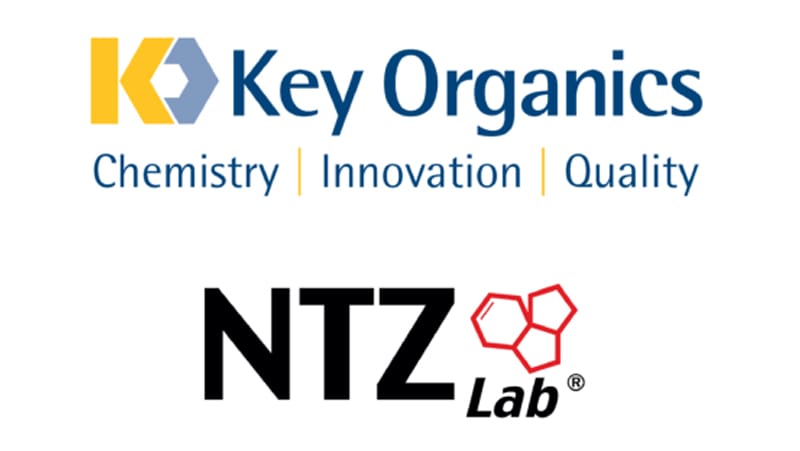
Introduction
A new collection of nine CNS active compounds, which have been recently licensed, is now available in the BIONET collection. This screening collection with experimentally-determined bioactivity, lipophilicity (LogP/D7.4), aqueous solubility, GIT and BBB permeability, chemical stability and toxicity will address the need of new, robust, and multipotent small molecules for the treatment and diagnosis of CNS diseases, such as Parkinson´s disease, Alzheimer´s disease, dementia and/or other neurodegenerative diseases [1–3]. NMR and LC-MS analysis allowed the careful control of the compound quality. Importantly, the newly discovered and well-validated molecules are enriched in heterocyclic scaffolds and specifically substituted phenyl moieties commonly found in CNS drug candidates, and spans chemical space that minimally overlaps with existing commercial collections. In addition, the compounds are easily accessible and offer the possibility of broad structural diversities in order to further explore the chemical space within further biological screening on relevant CNS targets [4]. This poster will summarize the design, synthesis, biological activity, and experimental ADME features of this potential next generation compounds that are available for further screening and elaboration for CNS disease treatment.
Development Stage
CNS Bioactivity
- SAR's & SSR's
- Selective MA0-B Inhibitors
- Dual MA0-A/B inhibitors
- Multipotent MA0-B inhibitors Me (II) chelators
- Mode of action (MoA)
PhysChem Profiling
- Heavy atom count ≤21 MW ≤ 320, HBA/HBD ≤ 3, PSA ≤70
- Aqueous solubility
- LogD7.4 ≤ 3.3
- Photochemical stability
- Mode of action (MoA)
Adme Profiling
- PAMPA-GI permeability
- PAMPA-BBB permeability
- Toxicity & metabolic stability
- Drug-drug interactions (CYP inhibition ≤ 50% @ 10µM)
Biophysical Analysis
- Single X-ray
- NTZ's X-ray/ HYDE technology platform
- Molecular modellinh & in silico predicition
- UV-Vis and fluorescent spectroscopy
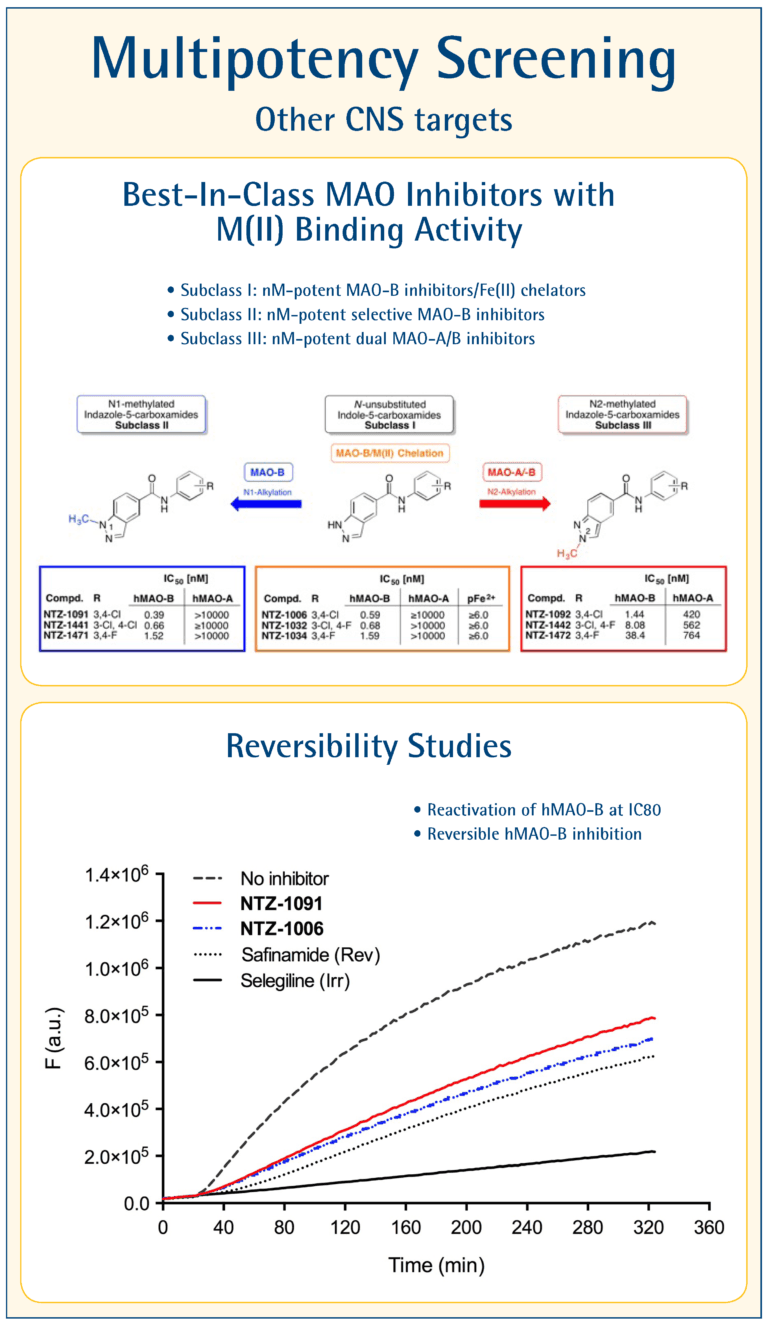
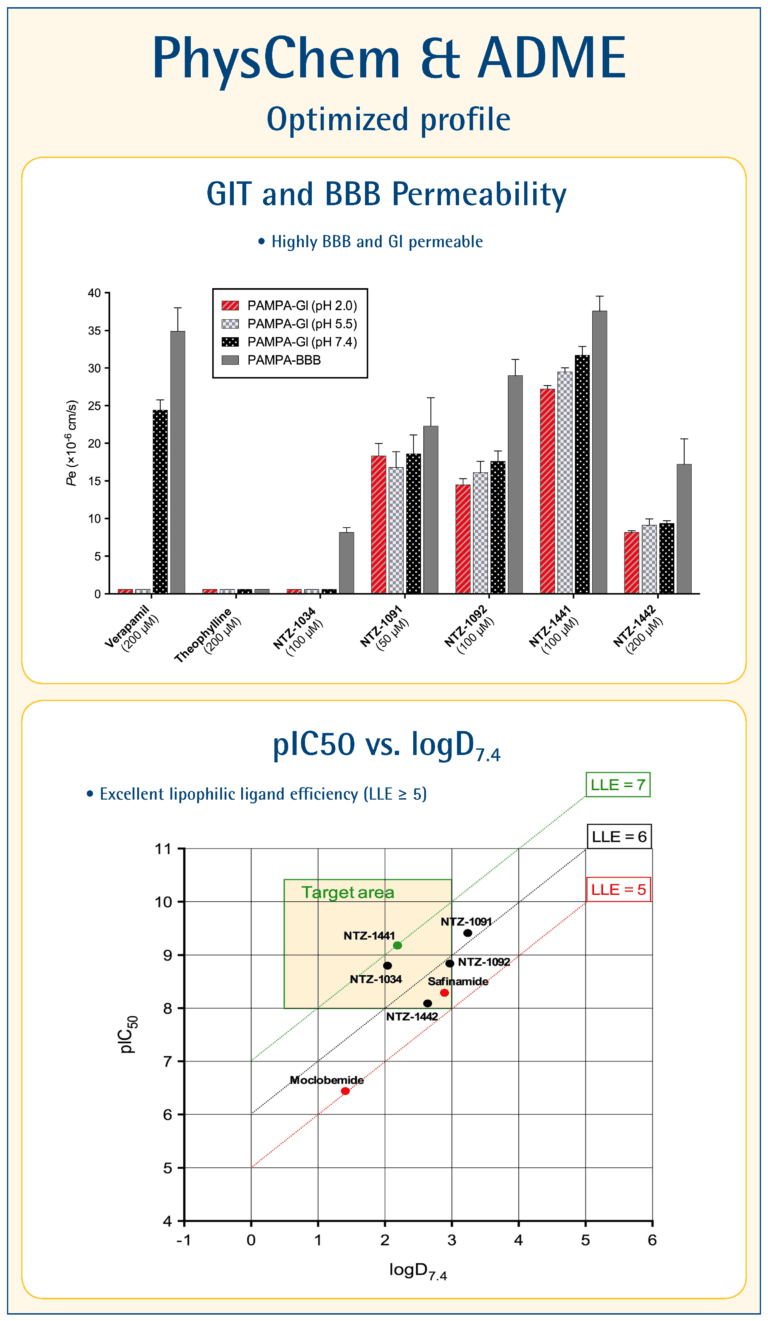
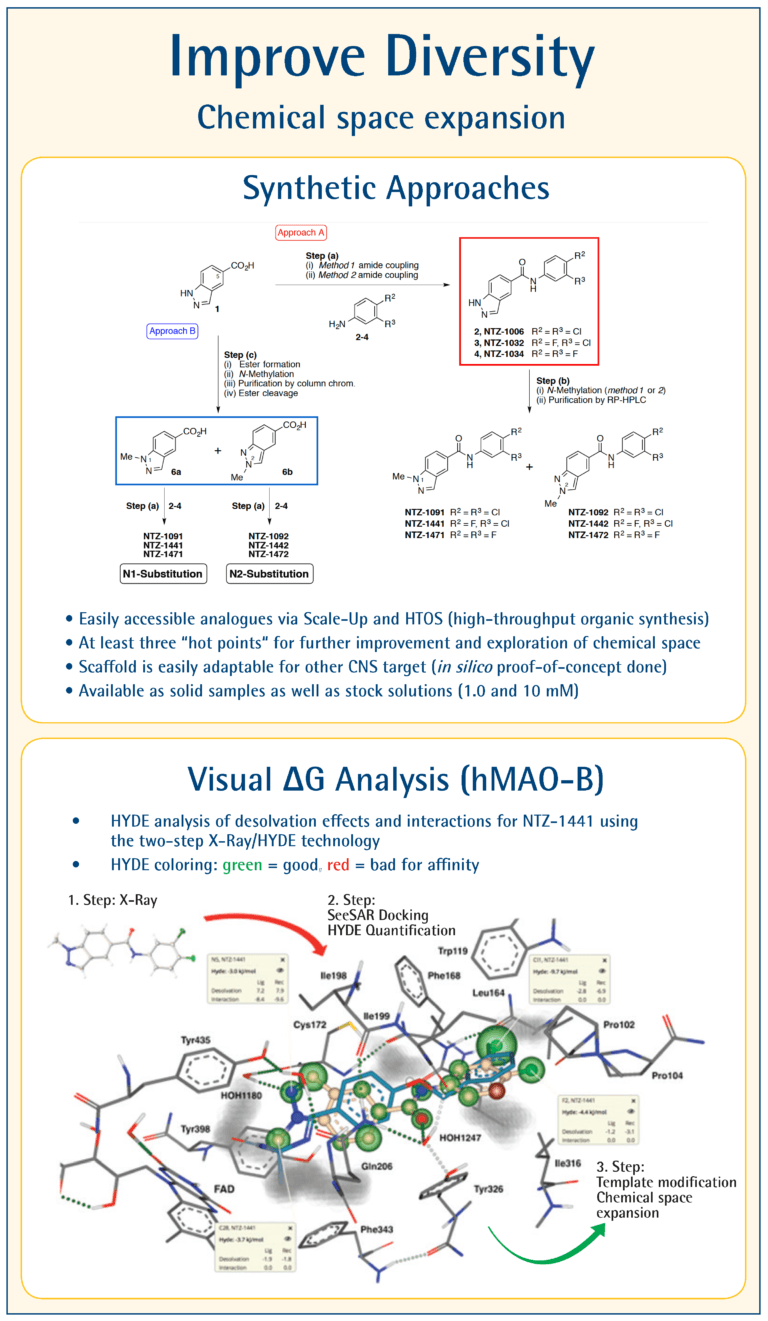
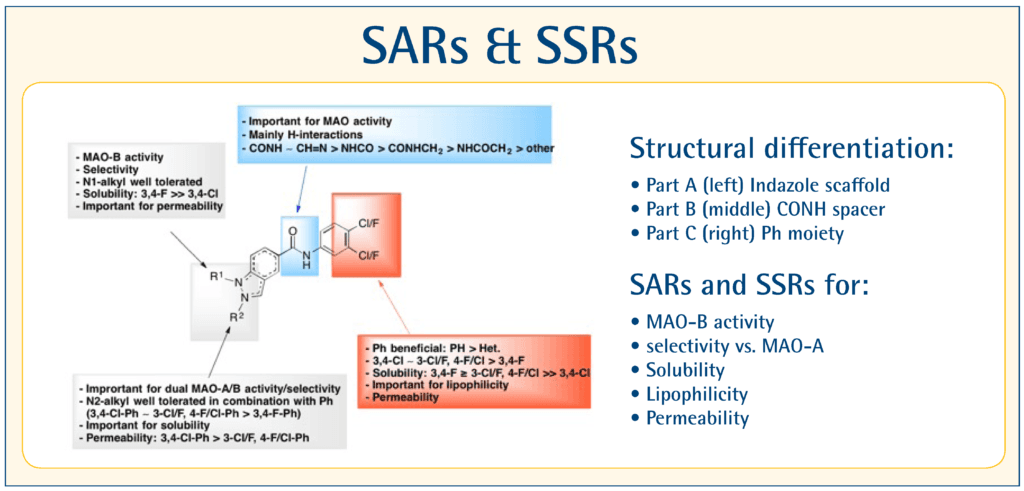
In summary
A new collection of nine CNS active compounds, which have been recently licensed, is now available in the BIONET collection. This screening collection with experimentally-determined bioactivity, lipophilicity (LogP/D7.4), aqueous solubility, GIT and BBB permeability, chemical stability and toxicity will address the need of new, robust, and multipotent small molecules for the treatment and diagnosis of CNS diseases, such as Parkinson´s disease, Alzheimer´s disease, dementia and/or other neurodegenerative diseases [1–3]. NMR and LC-MS analysis allowed the careful control of the compound quality. Importantly, the newly discovered and well-validated molecules are enriched in heterocyclic scaffolds and specifically substituted phenyl moieties commonly found in CNS drug candidates, and spans chemical space that minimally overlaps with existing commercial collections. In addition, the compounds are easily accessible and offer the possibility of broad structural diversities in order to further explore the chemical space within further biological screening on relevant CNS targets [4]. This poster will summarize the design, synthesis, biological activity, and experimental ADME features of this potential next generation compounds that are available for further screening and elaboration for CNS disease treatment.
- MW ≤320, cLogP ≤3, number of HBA/HBD ≤3, PSA ≤70, NRB ≤3, HA count ≤21
- Multipotent compounds (MA0-B/Me(II) binding) or dual reversibile MA0-A/B inhibitors
- Does not include substructures identified as toxic
- Optimised synthesis (in gram and multigram scale) suitable for parallel synthesis and HTS screening
- X-Ray and photochemical analysis
- PAMPA-GIT (at pH 2.0,5.0 and 7.4) and PAMPA:BBB permeability
- Solubility and logD7.4
References
1. Tzvetkov, N. T. PCT Patent WO 2014/107771 A1, NTZ Lab Ltd., 2014.
2. Tzvetkov, N. T.; Stammler, H.-G.; Neumann, B.; Hristova, S.; Antonov, L.; Gastreich, M. Crystal structures, binding interactions, and ADME evaluation of brain penetrant N-substituted indazole-5-carboxamides as subnanomolar, selective monoamine oxidase B and dual MAO-A/B inhibitors. Eur. J. Med. Chem., 2017, 127, 470–492.
3. Tzvetkov, N. T.; Hinz, S.; Küppers, P.; Gastreich, M.; Müller, C. E. Indazole- and indole-5-carboxamides: Selective and reversible monoamine oxidase B inhibitors with subnanomolar potency. J. Med. Chem., 2014, 57, 6679–6703.
4. Tzvetkov, N. T. and Antonov, L. Subnanomolar indazole-5-carboxamides inhibitors of monoamine oxidase B (MAO-B) continued: indications of iron binding, experimental evidence for optimized solubility and brain penetration. J. Enz. Inh. Med. Chem., 2017, 32(1), 960–967.
